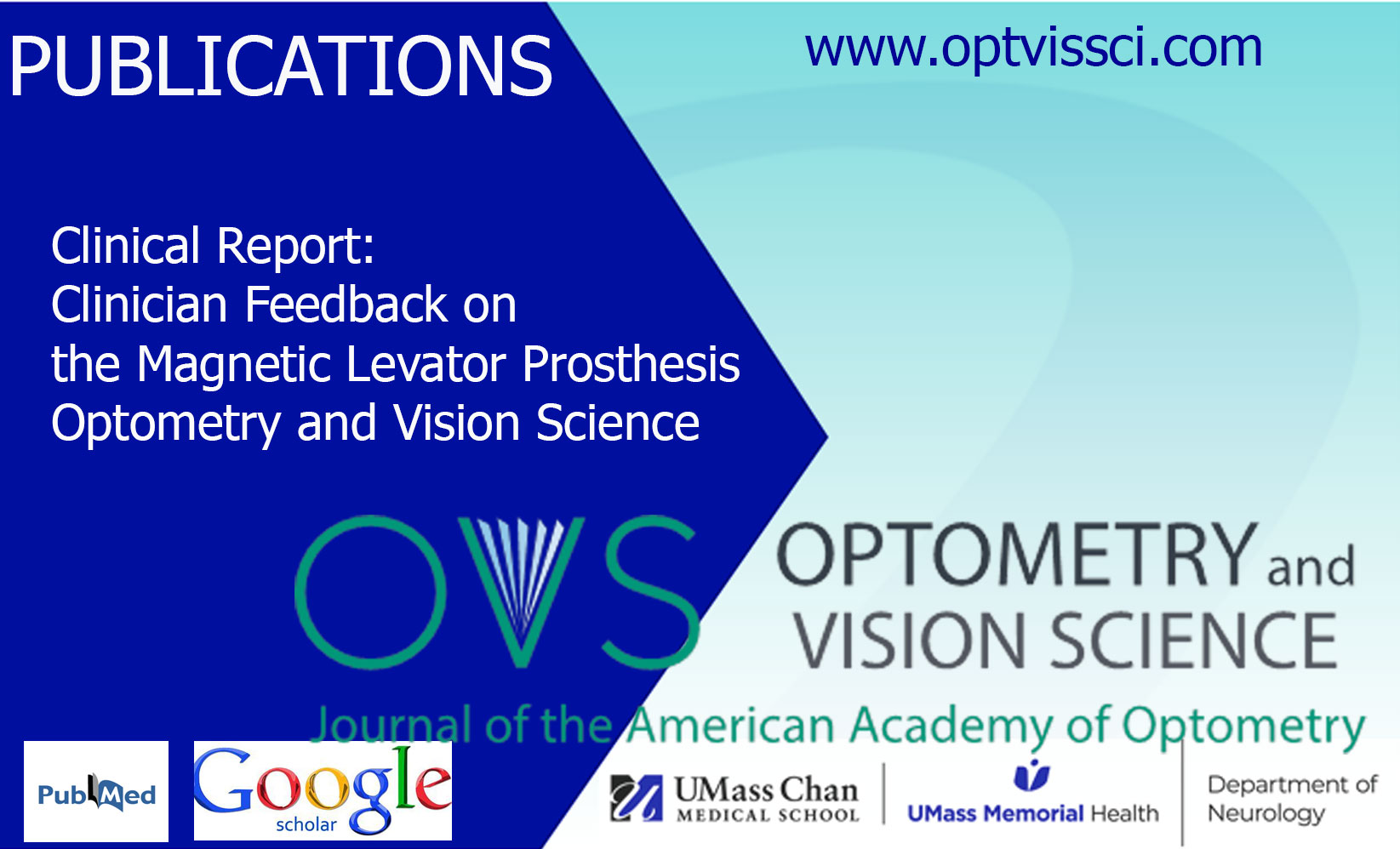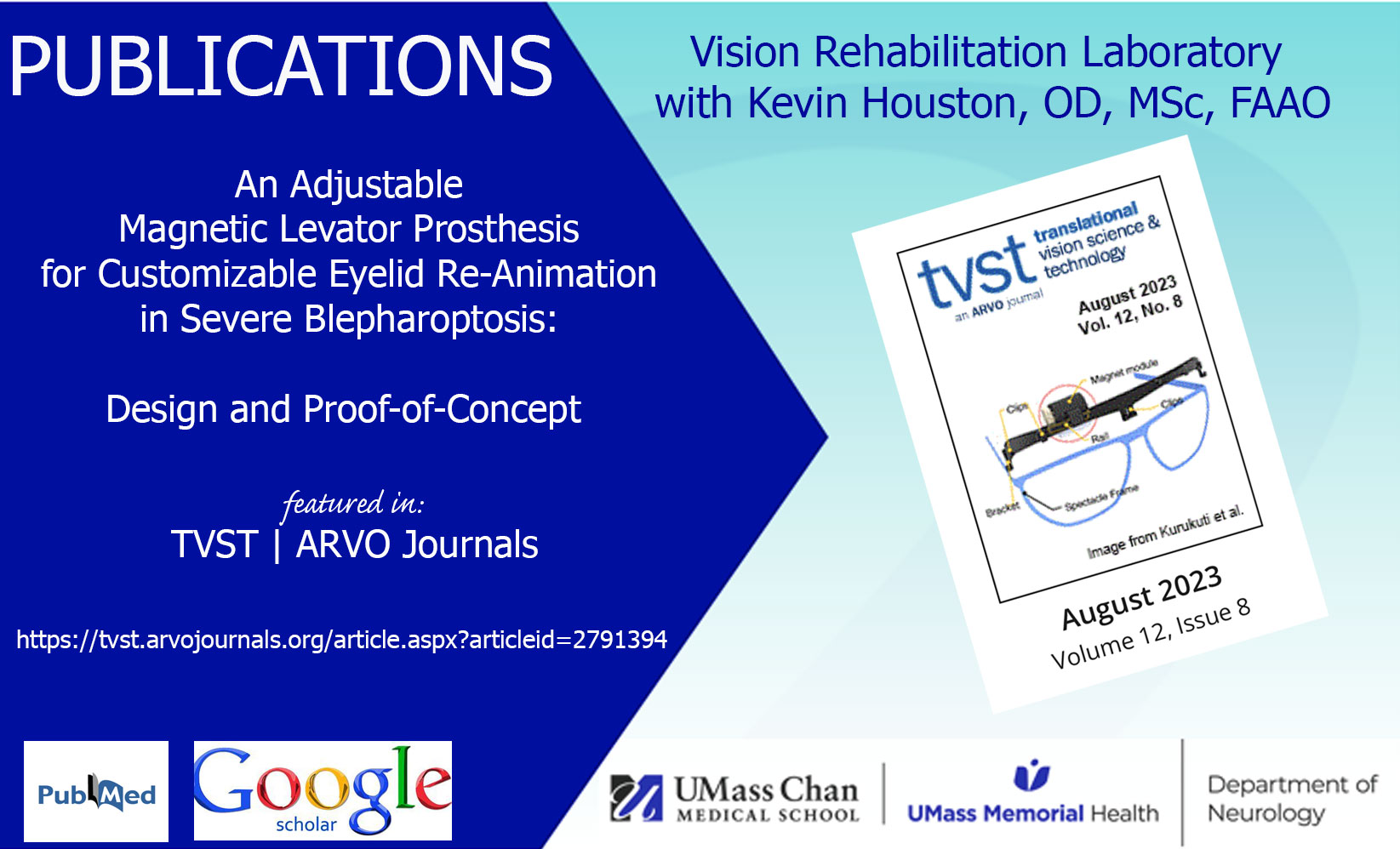
October 2023 Publication Spotlight
 Review the clinical report discussing clinician feedback on the Magnetic Levator Prosthesis by Kevin Houston, OD, MSc, FAAO, and the Vision Rehabilitation Laboratory. Read their latest publication in ARVO Journals. www.optvissci.com
Review the clinical report discussing clinician feedback on the Magnetic Levator Prosthesis by Kevin Houston, OD, MSc, FAAO, and the Vision Rehabilitation Laboratory. Read their latest publication in ARVO Journals. www.optvissci.com
Adjustable MLP, Magnetic Levator Prothesis, opens opportunities to patients who suffer from droopy eyelids impacting vision.
August 2023 Publication Spotlight
 Creating quality-of-life improvement devices by Kevin Houston, OD, MSc, FAAO, and the Vision Rehabilitation Laboratory. Read their latest publication in ARVO Journals. https://lnkd.in/eqr2kDw7
Creating quality-of-life improvement devices by Kevin Houston, OD, MSc, FAAO, and the Vision Rehabilitation Laboratory. Read their latest publication in ARVO Journals. https://lnkd.in/eqr2kDw7
Adjustable MLP, Magnetic Levator Prothesis, opens opportunities to patients who suffer from droopy eyelids impacting vision.
Total: 20 results
